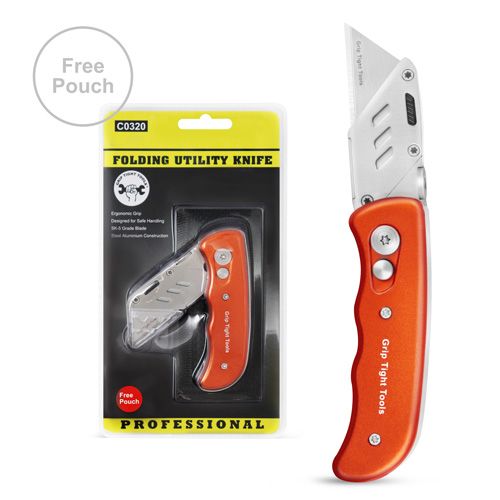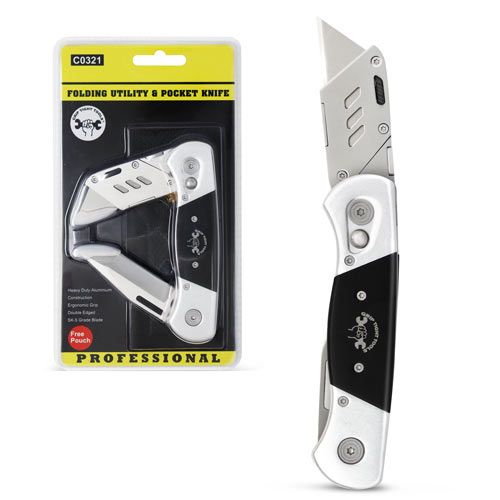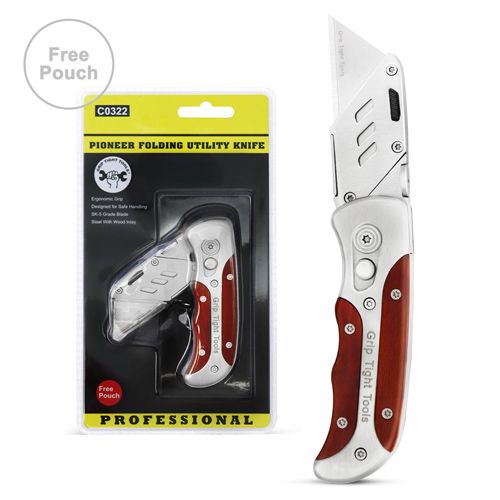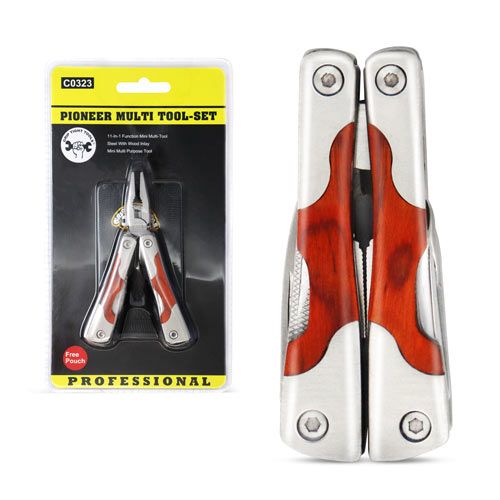FREE SHIPPING ON ORDERS $35+ (Excludes Bulky Items)
Folding Utility Knives
FOLDING UTILITY KNIVES FAQ's
What are folding Utility Knives?
Folding utility knives are a type of utility knife that has a blade that can be folded into the handle when not in use. They usually have a spring lock that secures the blade in the open or closed position. They may also have a clip or a lanyard hole for easy attachment to a belt or a keychain.
Folding utility knives are convenient and portable, as they can fit in your pocket or tool pouch without exposing the blade. They are also safer than fixed-blade or retractable-blade utility knives, as they prevent accidental cuts when the knife is not in use. However, folding utility knives may not be as durable or sturdy as other utility knives, and they may require two hands to open or close.
What are the different types of Folding Utility Knives?
- Fold-out utility knives: These knives have a blade that folds into the handle like a pocket knife. They usually have a locking mechanism to prevent accidental closure and a quick-release button to change blades easily.
- Slide-out utility knives: These knives have a blade that slides out of the handle like a box cutter. They usually have a retractable mechanism to adjust the blade length and a thumb knob to lock the blade in place.
- Multi-tool utility knives: These knives have a blade that can be swapped with other tools such as a saw, a screwdriver, a bottle opener, etc. They usually have a spring-loaded mechanism to switch between tools and a locking mechanism to secure them in place.
How to use Utility Knives?
- Choose the right type of knife and blade for your task: Depending on what you want to cut and how much control you need, you may prefer a fold-out, slide-out, or multi-tool utility knife. You may also want to choose a blade that suits your material, such as a serrated edge for rope, a hooked edge for carpet, or a rounded tip for safety.
- Open and lock the blade: Depending on the type of knife you have, you may need to press a button, slide a knob, or flip the handle to open the blade. Make sure the blade is fully extended and locked in place before you start cutting. Some knives have a retractable mechanism that allows you to adjust the blade length as needed.
- Hold the knife firmly and comfortably: Grip the handle of the knife with your dominant hand and keep your fingers away from the blade. You may want to use your thumb or index finger to press on the back of the blade for more control and leverage. Hold the knife at an angle that allows you to see what you are cutting and apply enough pressure to cut through the material without slipping or tearing.
- Cut with smooth and steady strokes: Use your other hand to hold the material securely and guide the knife along the desired line. Cut with smooth and steady strokes, avoiding sudden jerks or twists that could damage the blade or cause injuries. If possible, cut away from your body and other people. If you need to change direction, stop cutting and reposition the knife before resuming.
- Close and store the blade: When you are done cutting, close and store the blade safely. Depending on the type of knife you have, you may need to press a button, slide a knob, or flip the handle to retract or fold the blade. Make sure the blade is fully closed and locked in place before you put the knife away. You may want to store the knife in a sheath, pouch, or case to protect it from dust and moisture.
- Change the blade when needed: If you notice that the blade is dull, chipped, bent, or rusty, you should change it as soon as possible. A dull blade can cause more friction and force, which can lead to accidents and injuries. To change the blade, you may need to press a button, slide a knob, or unscrew a screw to release the old blade. Then, insert a new blade in the same way and lock it in place. Be careful not to touch the sharp edges of the blades and dispose of them properly.




